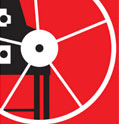Writing an Artist Statement
 When it comes to writing an artist’s statement, there are no simple formulas. Artists’ statements vary in length, form, and substance. Depending on the situation that prompted your need to write, you may have to take all or most of the following elements into account: your audience, your purpose or motive, the materials and medium in which you work, the subject of your work, the theories and methodologies that influenced your work, your own personal perspective or background. It is usually impossible to break this information down into separate categories, as it is all somewhat interrelated.
When it comes to writing an artist’s statement, there are no simple formulas. Artists’ statements vary in length, form, and substance. Depending on the situation that prompted your need to write, you may have to take all or most of the following elements into account: your audience, your purpose or motive, the materials and medium in which you work, the subject of your work, the theories and methodologies that influenced your work, your own personal perspective or background. It is usually impossible to break this information down into separate categories, as it is all somewhat interrelated.
Because artists’ statements vary so much, it will probably help to look at examples written by other artists. Simply visit any artist website for examples.
Most artists’ statements are written in the present tense, but the voices vary significantly. Some are playful, some are extremely scholarly, and some play with the visual form that words take on the page.
Please remember that your artist’s statement must reflect what it is you want to emphasize. The following breakdown is only meant to provide you with strategies that may help you get started. The order in which you present this information (and how much you include) will depend on the purpose, occasion, audience, etc.
This guide should also prove to be useful if you’re writing a proposal for a show, a grant application, or a letter of intent.
A good artist statement will support your professional practice, for example:
Giving brief information to support an exhibition or catalogue
- Submitting a proposal
- Applying for a grant
It should be:
- Concise
- Effective in communicating the details you wish to emphasize
- Written in the first person
- Written primarily in the present tense
It should be adaptable in order to take into account:
- Your audience
- Your purpose or motivation for writing it
It might contain information on:
- What your motivation is for the work you do
- What issues are you exploring and why?
- What concepts, themes or convictions underpin your work?
- How do your life experiences influence your work
- How does your personality influence your work?
- How have your ideas developed?
The techniques and materials you use:
- How and why did you choose them?
- What scale do you work in?
- Do you have a particular process of working?
- Do you intend to explore other techniques or materials?
Your background:
- Are you a student or a practicing artist?
- Details of your educational history if you feel it appropriate
- Have you contributed to any prestigious shows or events
How you contextualise your work:
- Where do you feel you fit into the Contemporary Art World?
- Does your work challenge the work of others?
- Have you appropriated or referred to the work of others
- Your goals and aspirations and to what extent you have realised them
- Personal reflections on your work
500 LETTERS: ARTIST STATEMENT GENERATOR
500 Letters is an online artist statement generator. The fact that a random system can so accurately mimic artist statements is a fun and even educational tool in helping artists develop personal statements. It’s fun…
Visit 500 Letters Artist Statement Generator.
Author: Jasper Rigole



